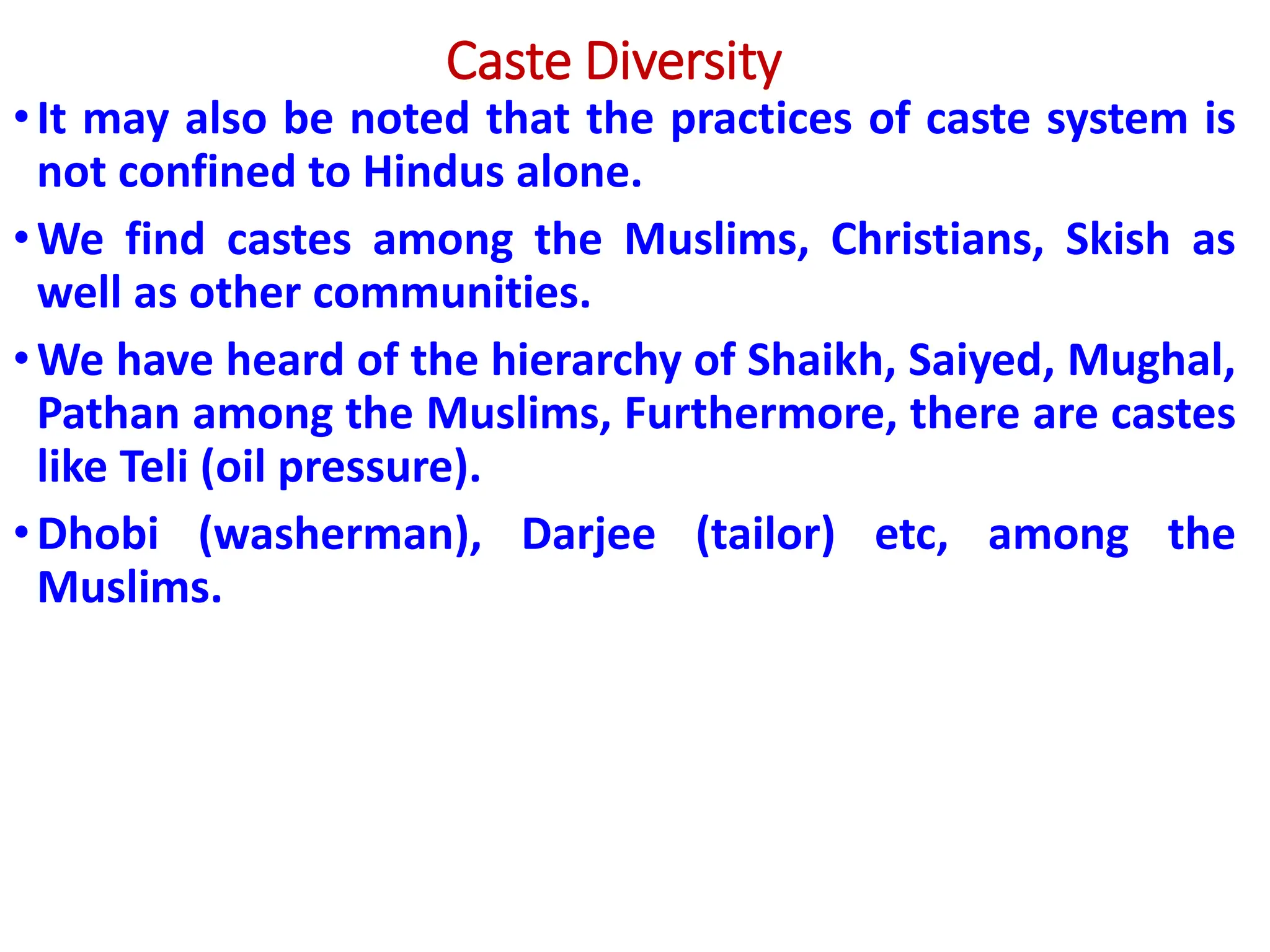The document discusses social diversity in India. It defines diversity as the range of differences among people in a society. It then discusses various levels and types of social diversity in India including individual diversity, regional diversity, linguistic diversity, religious diversity, caste diversity, and tribes diversity. For each type of diversity, it provides details on their nature, causes, and examples. It emphasizes that education plays an important role in creating a positive attitude towards diversity by promoting awareness, cultural competence, inclusivity, respect for differences, and a multicultural curriculum.





























































